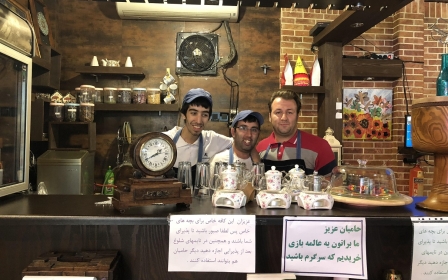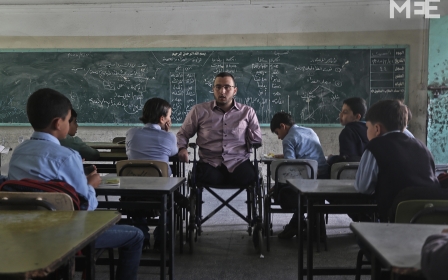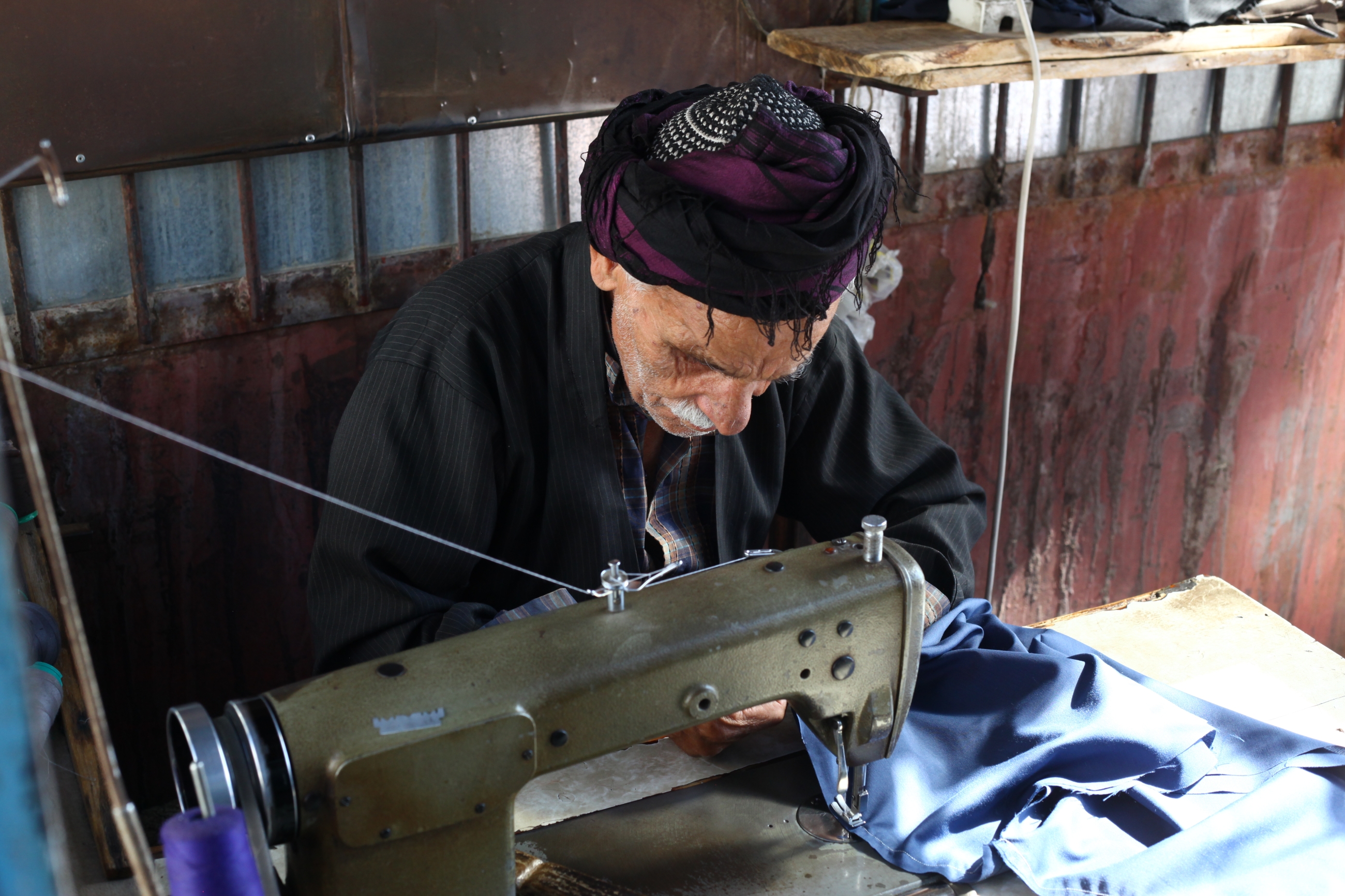
In pictures: Seeing through the needle's eye
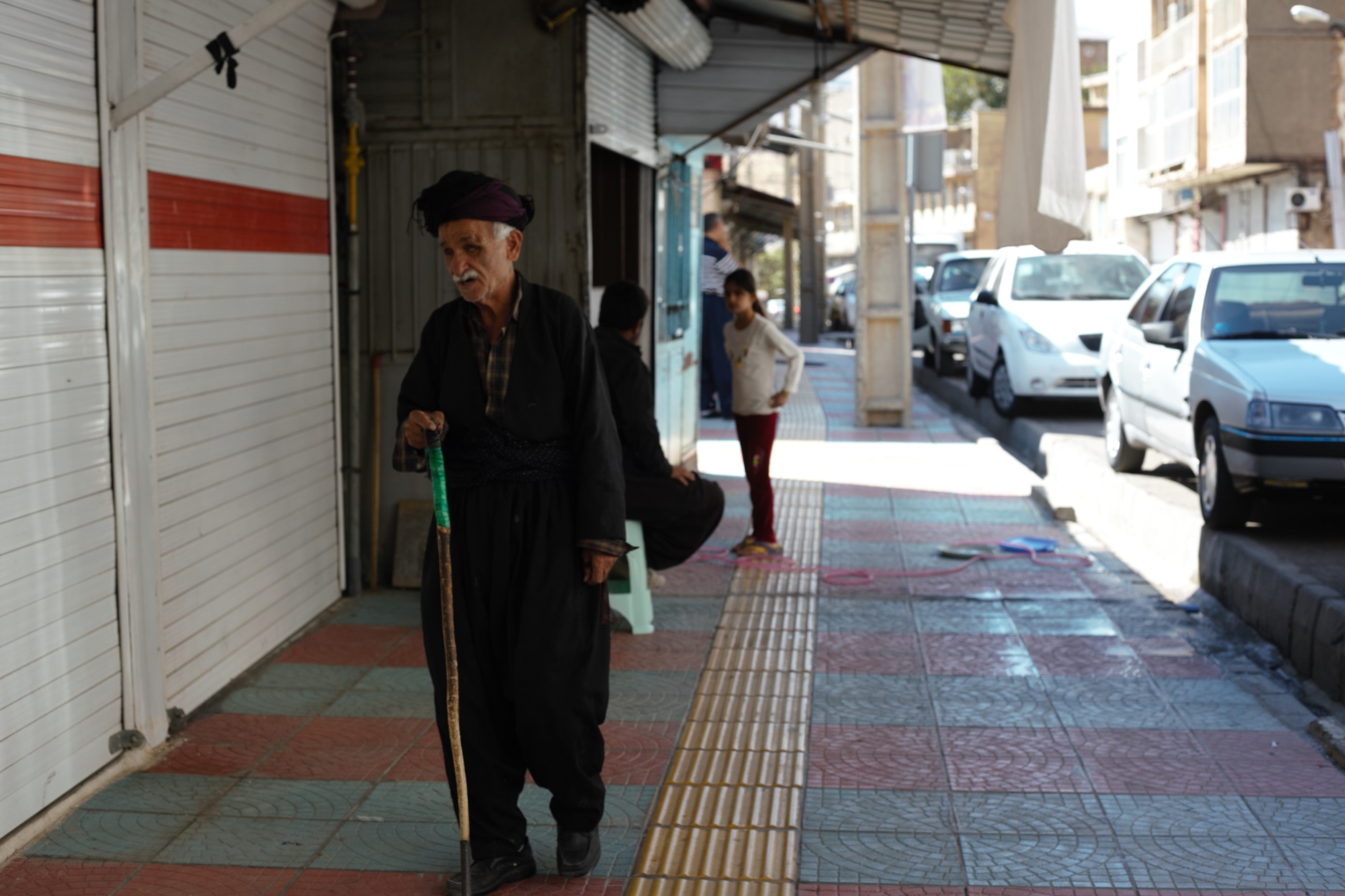
Ali Badri's modest shop is a three-minute walk from his home in the mountainous city of Paveh in the Kermanshah province in western Iran, 42 kilometres from the Iraqi border. Much of the Sunni-majority city's population are of Kurdish origin and speak both Kurdish and the official Persian language, Farsi (MEE/Sarbas Nazari)
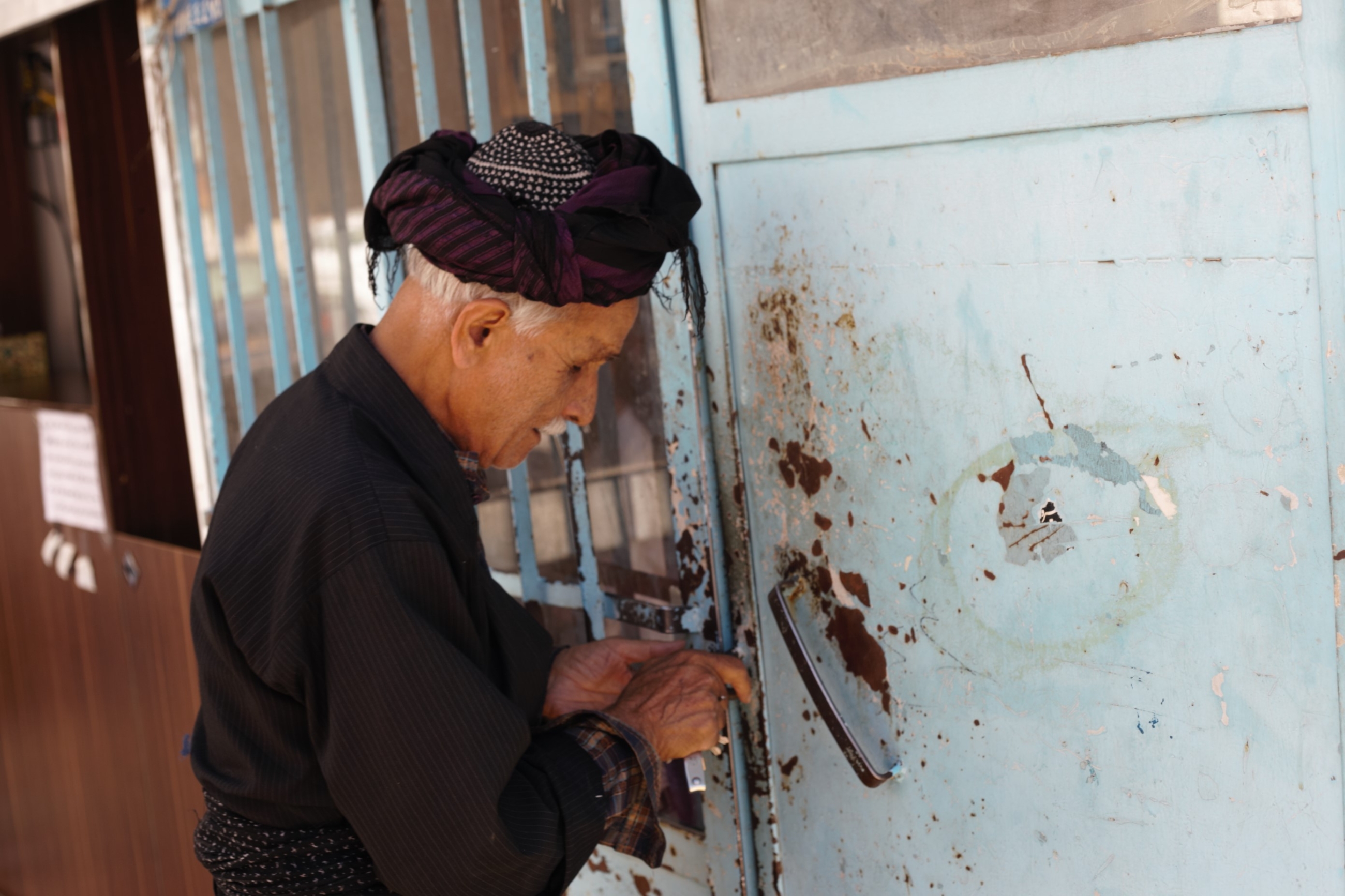
The day before his 20th birthday, Badri accidentally pulled the trigger as he was locking and loading his gun during a bird-hunting expedition. The bullets bounced back from a rock next to him and struck his eyes, leaving him permanently blinded. "Being blind has never been easy, but what counts is the heart and my sight is in my heart," Badri says. (MEE/Sarbas Nazari)
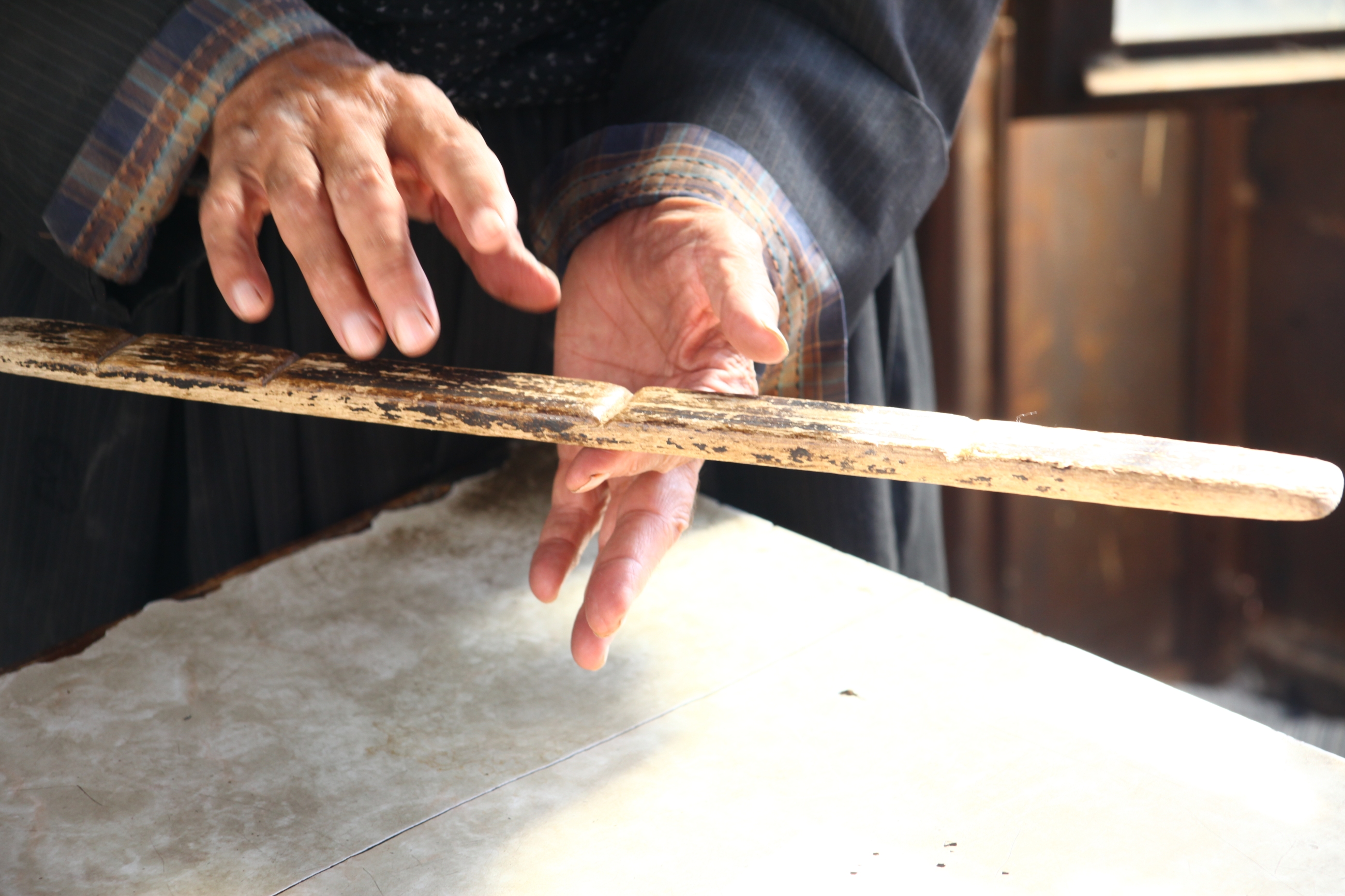
Badri uses a special wooden tool to measure his clients' height, which he has carved with special markings. He credits the moral support he received from his fellow citizens for keeping his spirits up. After working in his late father's tailoring shop for a few months after the accident, Badri decided to open up his own business. Within a few weeks he was inundated with dressmaking orders (MEE/Sarbas Nazari)
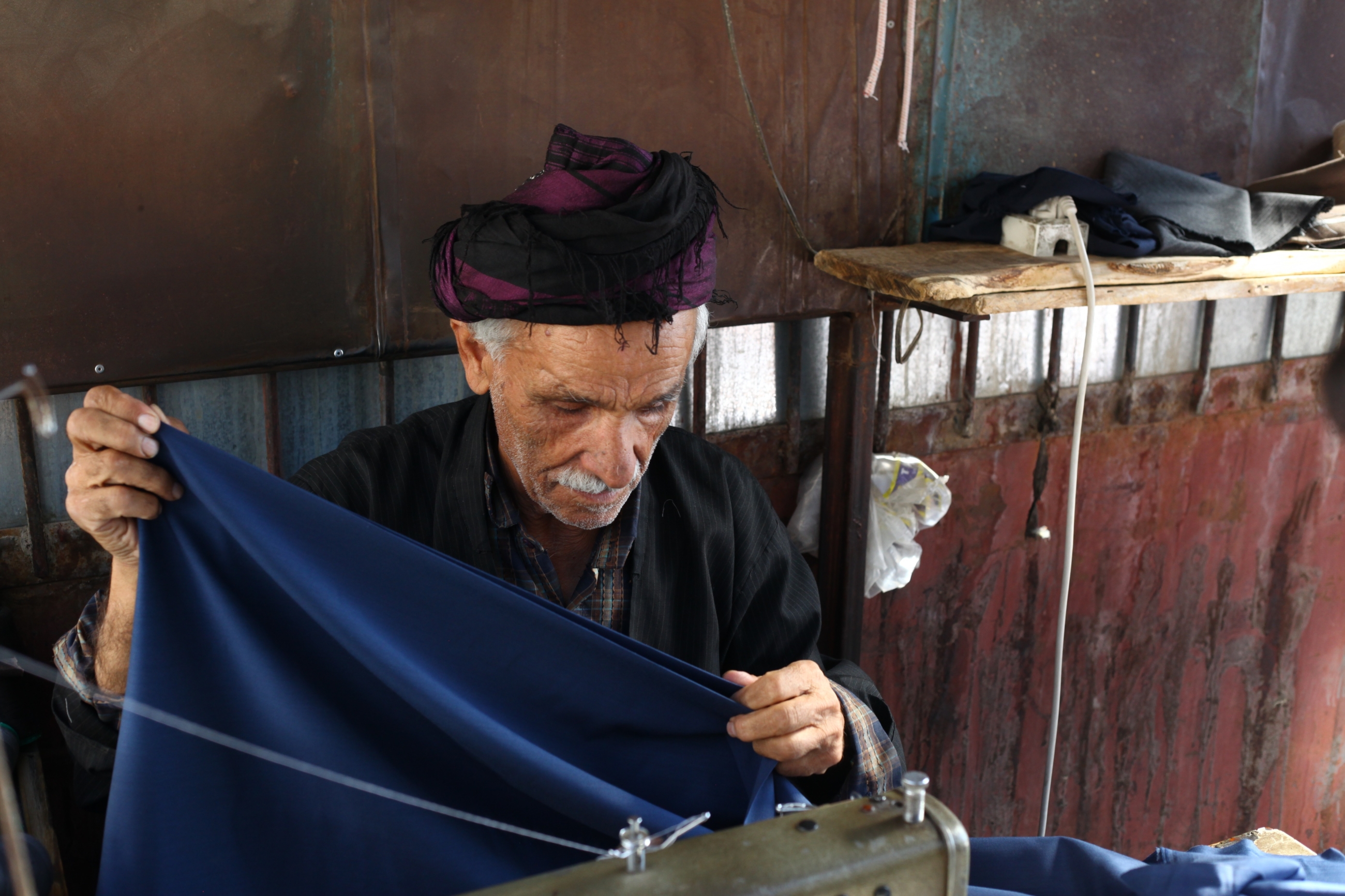
Despite empowerment programmes launched by the government in recent years, Iran still has some way to go before visually impaired people are better integrated into society. Badri says a local branch of the Iranian state welfare organisation (Sazman-e Behzisti) is paying him a monthly allowance of just over six US dollars - barely enough to put food on the table (MEE/Sarbas Nazari)
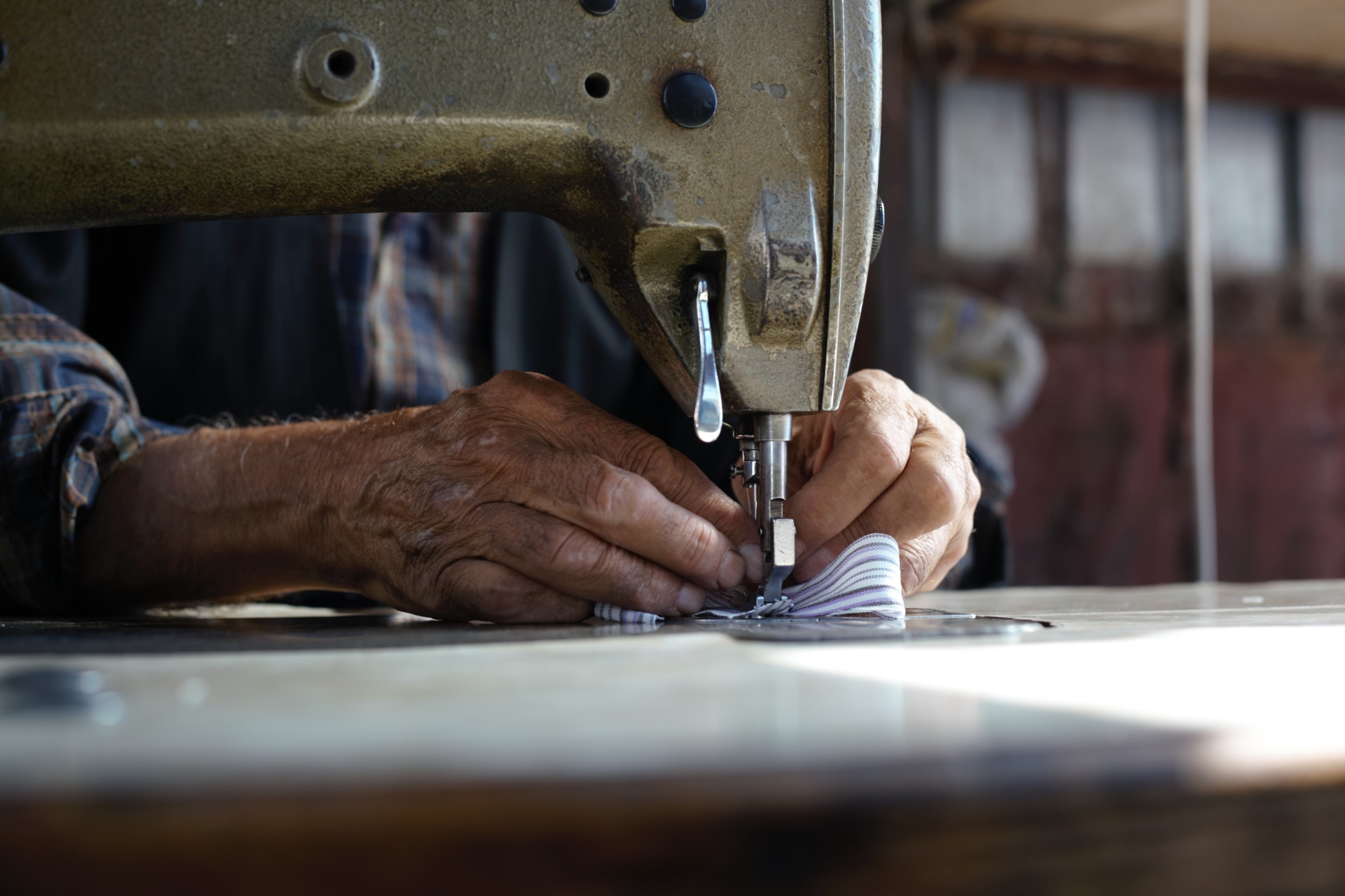
Badri lost his wife nine years ago and every Friday he visits her grave. Badri says she stayed by his side, despite being pressured from her father to leave him when it looked like he would not be able to provide for the family any more. Two of their eight children passed away - one in an accident and another he lost to cancer last year. His remaining children are all married but they visit him often and help with his household chores (MEE/Sarbas Nazari)
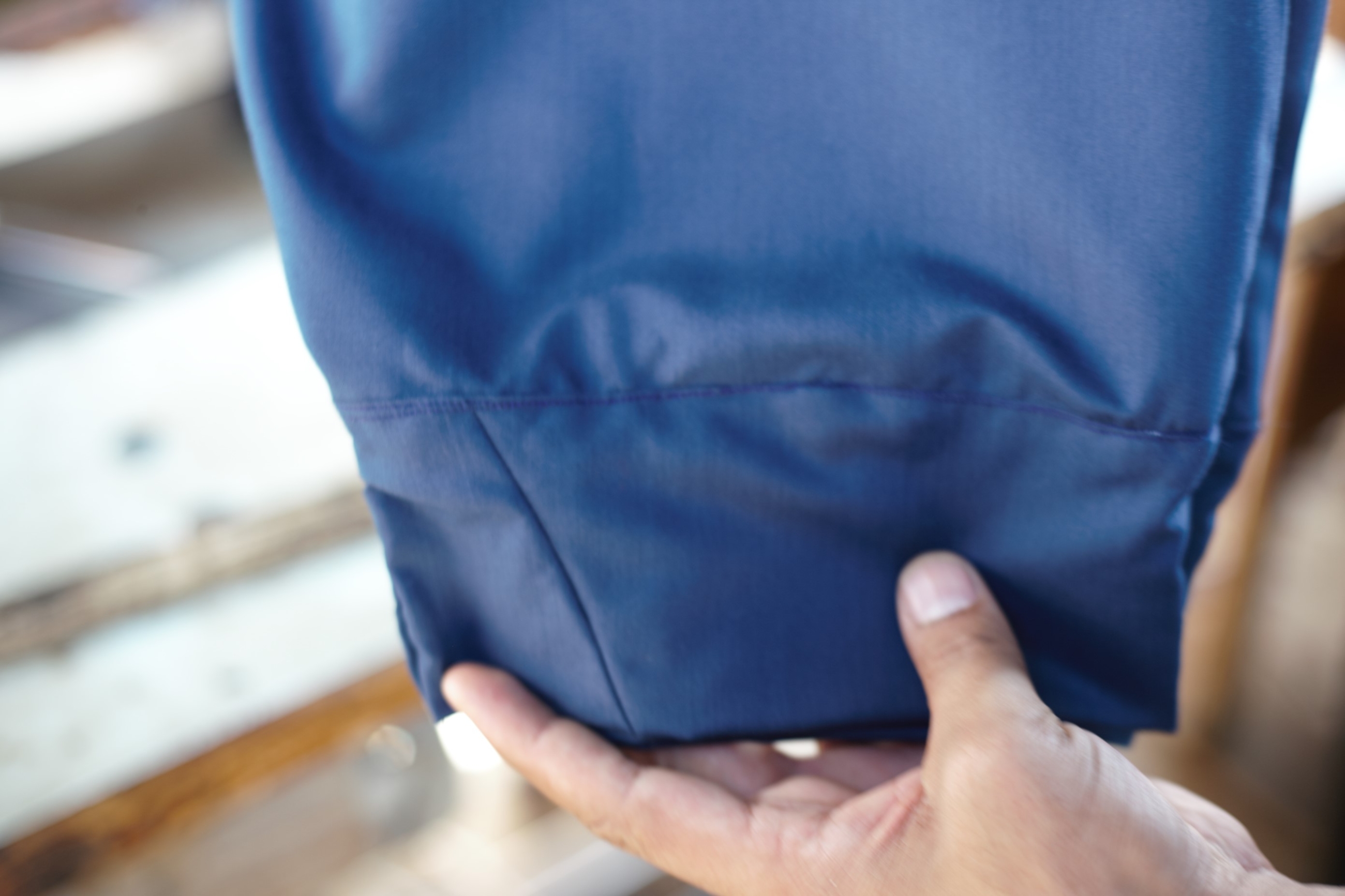
His most popular orders are for pyjamas and the traditional Kurdish outfit, a chokho-ranak. Worn by men, including Badri himself, this consists of a pair of baggy trousers and jacket with a long cloth belt, or shaal, which is wrapped around the midriff (MEE/Sarbas Nazari)

Badri has an infectious sense of humour. He refuses to let anyone help him, replying with a laugh: "What, do I look like a baby?" And at 78, he is as productive as ever, stitching a few outfits per day. "Don’t be fooled by looks. I'm as spirited and upbeat as a 25-year-old lad, not an old man waiting to kick the bucket." (MEE/Sarbas Nazari)
Middle East Eye propose une couverture et une analyse indépendantes et incomparables du Moyen-Orient, de l’Afrique du Nord et d’autres régions du monde. Pour en savoir plus sur la reprise de ce contenu et les frais qui s’appliquent, veuillez remplir ce formulaire [en anglais]. Pour en savoir plus sur MEE, cliquez ici [en anglais].


